On the twelfth day of anime, an anime studio sent to me…
…twelve stationary weapons.
Tokusatsu and anime don’t often mix but sometimes I wish they did.
Though I’m a relatively new tokusatsu fan–started my first tokusatsu show, Kamen Rider Kiva in spring 2010, when I think back my foray into tokusatsu was perhaps a return rather than a first visit. Yes, I was one of the kids who grew up watching Mighty Morphing Power Rangers (the Americanized version of Kouryu Sentai Zyuranger). Tommy Oliver, along with Jason Lee Scott, were my favorite rangers–and the concept of guys bedecked in bright spandex beating up a bunch of rubber suited monsters (kaiju) wasn’t quite as comical to my young and impressionable mind then as it is now.
(Don’t get me wrong–despite being an adult, I still enjoy watching spandex guys clobber some rubber suits, though the fights have relied more on mediocre CGI over the years.)

What’s really cool about Samurai Flamenco is how it tackles the subject of how an obsessive admiration for superheroes–charming in children but scorned in adults–can go so far out of hand. You have a struggling pop idol, Hazama Masayoshi, who fulfills his childhood fantasies by dressing up in his custom-made Samurai Flamenco outfit and confronting the not-so-villainous standard fare of jaywalkers, neighborhood thugs, or in some cases, extremely violent middle school students.
One moment I really enjoyed was the show’s treatment of apathy to small and petty crimes in Episode 2, where Goto, Hazama’s new cop friend, warns him to quit his superhero (more like super-nuisance) moonlighting to avoid catching the police’s attention. The two proceed to get into a fairly philosophical discussion on the proliferation of small crimes and rule breaking, and how people’s apathy and lack of concern for others perpetuates the cycle.
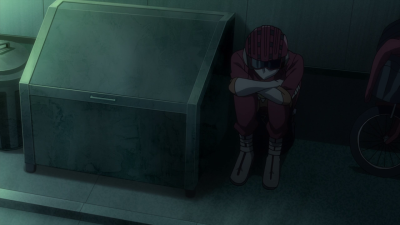


Conclusion: It must be the forces of EVIL.
Masayoshi’s black and white indigence is so very classic tokasatsu hero. If you watch your tokusatsu you’ll notice that with a few dark, hard-core exceptions (think Garo), the villains in the show tend to lean on the goofier side. Tokumei Sentai Go-Busters had an eraser and a mochi blob as monsters. Samurai Sentai Shinkenger had a glue monster. Kamen Rider W even had a kitty-cat as one of its supporting antagonist. Regardless of how silly these monsters are, they’re always taken very seriously as with any other monster, even if their crimes are tantamount to nothing more than gluing a crowd of people to the sidewalk.
Masayoshi’s story of how he refuses to use umbrellas (he took a classmate’s umbrella on a rainy day to shield himself from the rain and the classmate ended up catching cold and falling ill the next day) is so ridiculously over the top, but it’s perfectly appropriate in the tokusatsu world, where justice is a clear cut boundary separating the bright and shiny side of harmony and the dark and evil side of chaos.
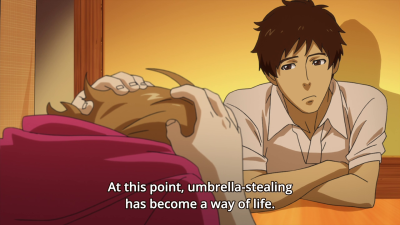
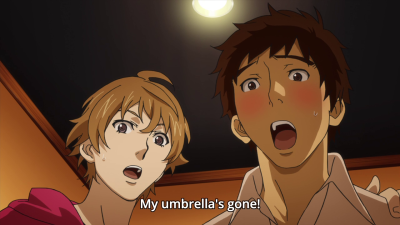
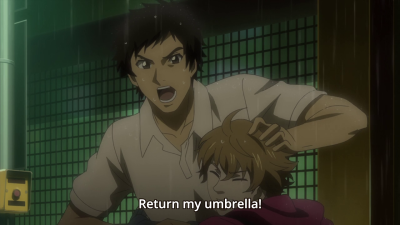
By conspiratorial chance, Goto’s umbrella gets taken and he despairs over losing his imaginary girlfriend’s umbrella. Masayoshi leaps at the chance to right this terrible wrong and does so in full tokusatsu style-chasing down the offender on his trusty bike (a parody, perhaps, to the Kamen Rider franchise) and obeying traffic rules a la Gekisou Sentai Carranger.
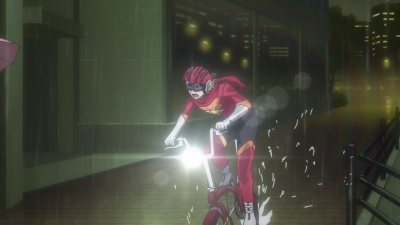

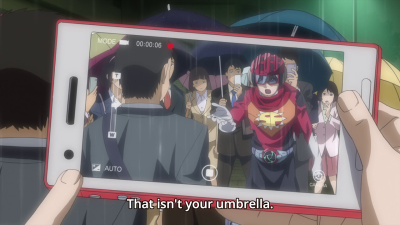
Unlike his other exploits, Samurai Flamenco’s heroic quest ends in victory, thanks to an attentive social-media sharing audience of bystanders. It’s the first time Masayoshi’s revealed himself in a crowd of adults, and the results are markedly different, with the offender sheepishly handing over the umbrella, all too self-conscious of the curious eyes of pedestrians and their smartphone cameras. It’s this moment that you realize how a superhero’s identity depends on the presence of the media and the media’s acknowledgement of the hero as a superhero, and not just some spandex-wearing weirdo with berating people for taking the trash out too early.
The negative effects of a media-defined hero are explored later in the show (which I’m firmly convinced is attempting to say something about the media’s dark power to meld fantasy and reality into one) but for now, as the culmination of 12 Days, I’ll end the post with yet another record of Samurai Flamenco, untainted by media presence.
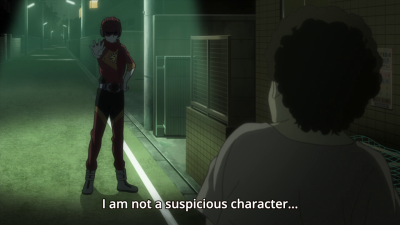
Read more about tokusatsu and why it might appeal to anime fans here.
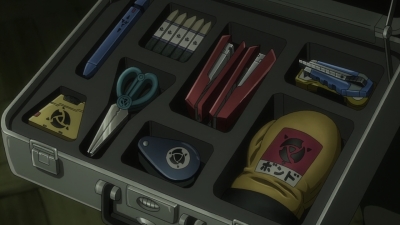
We have nominated your blog for the Liebster Award. If you would like to participate, here are the rules, instructions and questions: http://wp.me/p3nUI2-fN. But if not, that’s fine; take this nomination as a compliment that we like your blog!
LikeLike
Thank you for the nomination! I’ll post something on the blog about this sometime in the coming week or two!
LikeLike